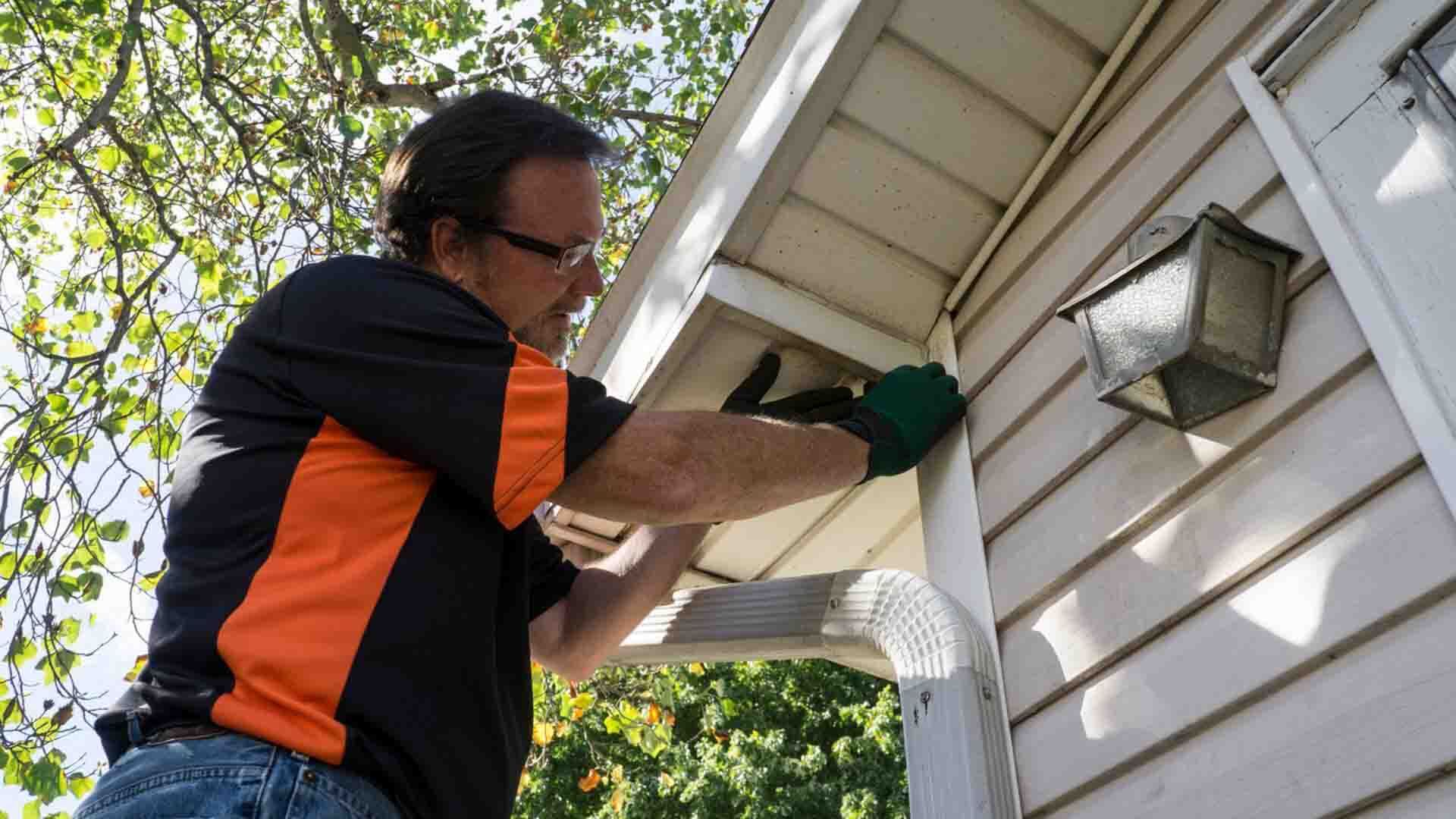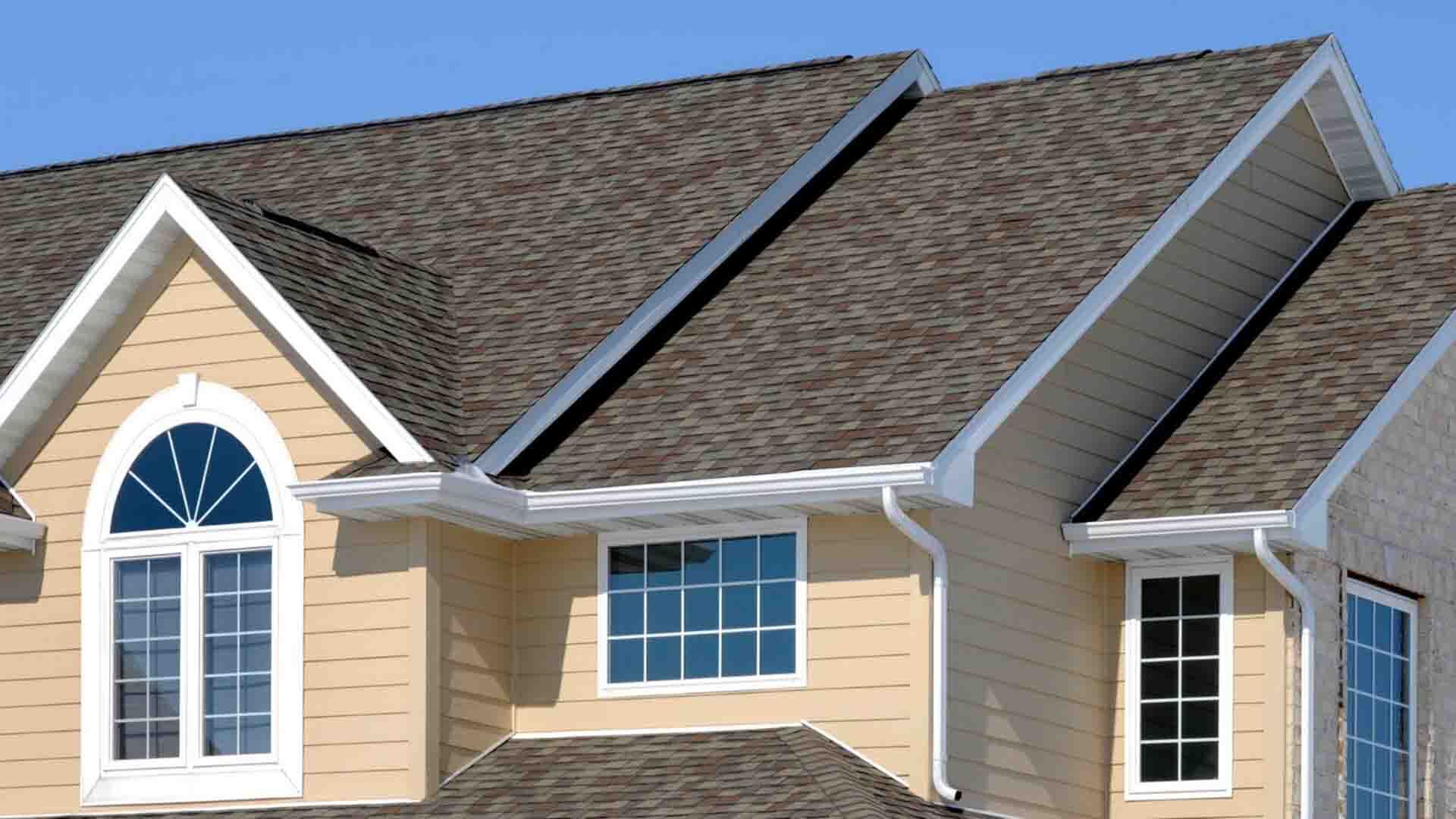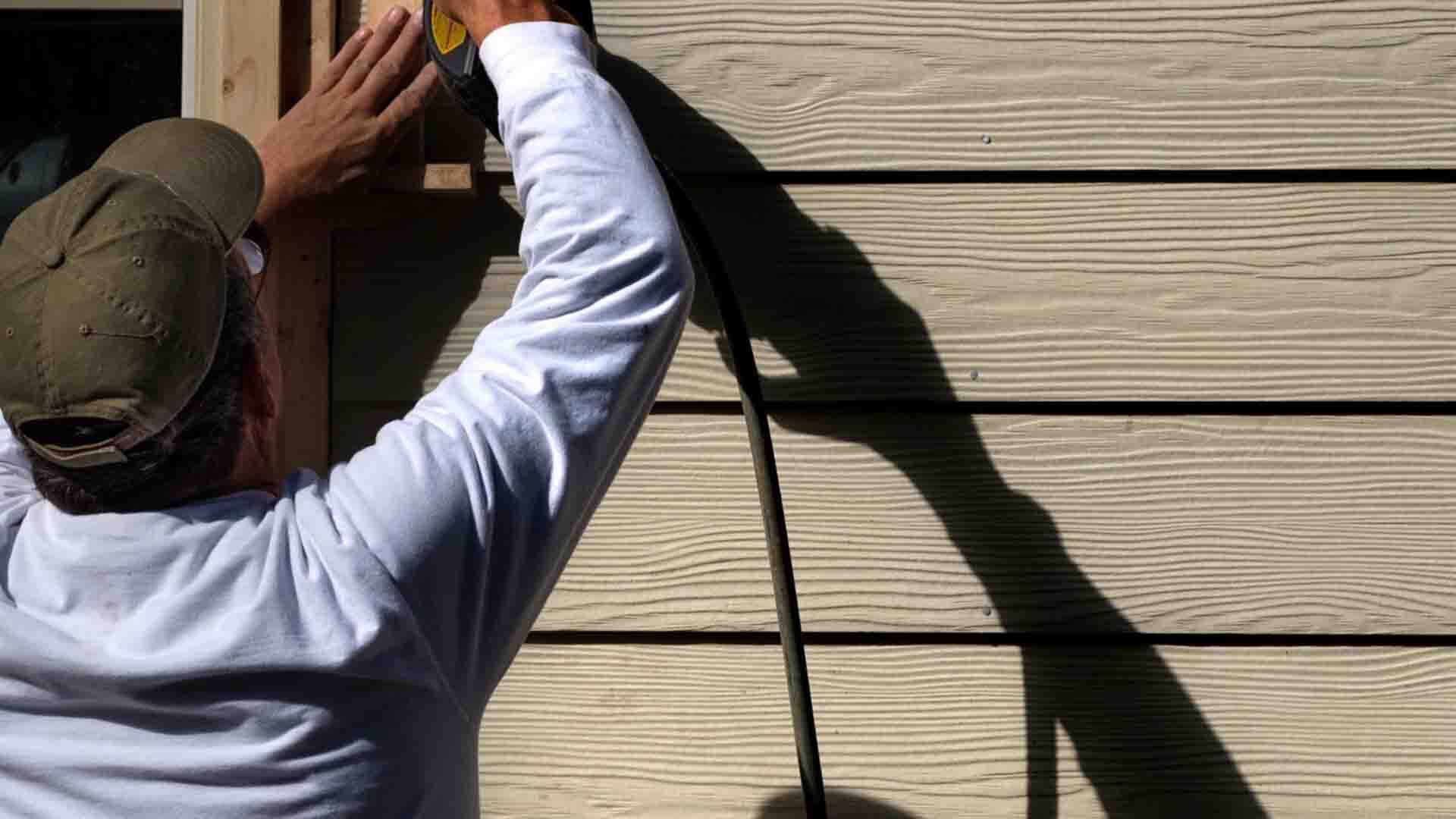Vinyl vs. Fiber Cement Siding: Which Is Better for Your Home?

Dealing with peeling paint, rising energy bills, or constant repairs to your home’s exterior can be utterly exhausting. So, it might be time to rethink your siding options.
One question many homeowners face today is, “Should I go with vinyl or fiber cement siding?”
Well, both are popular choices, but they solve very different problems. But they each bring different strengths to the table. Vinyl is budget-friendly and is known for its ease of maintenance. Whereas, fiber cement is known for its toughness and premium look.
Now, your goals might be different, too, depending on several factors, such as your home’s architecture, the climate of the region where you live, and many more. So, before deciding, it is important to understand how each material performs. In this blog, we’ll cover the 6 most important factors to help you confidently compare siding materials for your house.
Vinyl Vs. Fiber Cement Siding: Top 6 Considerations
Here’s a friendly, easygoing breakdown to help you weigh your siding choices -
- Which One Holds Up Best? - First, let's talk about durability and toughness. Well, fiber cement siding's advantages truly shine. It’s built like armor - resistant to rot, insects, hail, and fire. Whereas vinyl can crack in extreme cold or melt near heat sources, fiber cement stays sturdy in harsh weather.
If you live in a region with scorching summers or heavy storms, fiber cement offers long-term peace of mind. Vinyl still holds its own in mild climates, but for raw durability, fiber cement is the champ. - What Kind of Upkeep Are You Willing to Handle? - Vinyl is pretty carefree, with just an occasional soap-and-water wash to look fresh. Repairs are simple. All you need to do is swap out a damaged panel. No repainting, no fuss required!
Fiber cement, though, needs repainting every 8-15 years to look its best. It's challenging to maintain, but not a deal-breaker if you don’t mind scheduled upkeep. Think about whether you’d rather do a quick clean now and then, or invest more time and effort! - Do You Want a Modern Look or a Classic Style? - Vinyl comes in a variety of colors and styles. You can choose from beveled shakes, scallops, board and batten - you name it. The best thing is that it can mimic wood grain, but when you touch it up close, it may feel like plastic.
On the other hand, if you’re aiming for classical and timeless charm, or want to match the siding options for homes that can complement historical design, fiber cement is the best. It nails the authentic wood texture and feels more upscale. But vinyl still delivers a neat, modern look for less money. - How Green Do You Want Your Home to Be? - If you’re environmentally conscious, fiber cement is your best choice. It is made of cement, sand, and cellulose, all of which are fairly natural. However, vinyl is a petroleum-based product and has limited recycling, though newer options offer recycled content.
Consider the lifecycle, too. Fiber cement has a longer lifespan, which offsets its environmental footprint. On the other hand, lightweight panels use less energy in shipping but can end up in landfills. If “greenness” is your goal, you’ll find fiber cement to be the most sustainable option. - Which Siding Will Help Keep Your Home Comfortable? - The vinyl itself offers minimal insulation, but many brands include foam backing to boost energy efficiency. Insulated vinyl can hugely reduce heating and cooling costs. Fiber cement has moderate thermal performance, but you’ll need separate insulation.
If you’re looking for comfort plus energy savings, vinyl can be your best option. But, again, if you prefer the raw durability of fiber cement, pair it with quality insulation inside. - Will Your Siding Choice Help at Resale Time? - When it's time to sell your property, fiber cement siding gets the most eyeballs. They are considered premium, sturdy, and low-risk. On the other hand, vinyl is more common and affordable, which appeals to buyers, but it doesn’t carry the same “top-tier” image.
If you want to maximize your resale value, fiber cement could pay off. On the flip side, vinyl may appeal to buyers looking for a clean, cost-effective update without the “premium material price tag.”
Take a moment to think about your lifestyle and goals. This will help you confidently answer which is better, vinyl or fiber cement siding for homes, and move forward with a choice that fits you.

Vinyl And Fiber Cement Home Siding Comparison
Here’s a comparison between vinyl and fiber home siding -
| Feature | Vinyl Siding | Fiber Cement Siding |
|---|---|---|
| Material | Made from PVC (polyvinyl chloride) plastic resin. | Composed of cement, sand, water, and cellulose fibers. |
| Durability/Lifespan | Generally lasts 20–40 years. It can become brittle in extreme cold and warp in high heat. Susceptible to cracking from hail/impact. | Very durable, often lasting 50+ years. Highly resistant to weather, fire, pests, and rot. |
| Maintenance | Very low maintenance; typically only requires occasional washing with soap and water. No painting required, as color is built into the material. | Requires more maintenance; needs repainting every 10–20 years. Occasional cleaning with a hose. |
| Cost (Initial) | Generally, it is more affordable to purchase and install due to its lighter weight and easier handling. | Higher upfront cost for material and installation due to its weight and specialized installation requirements. |
| Aesthetics | Available in a wide range of colors and styles, including some that mimic wood grain. It can sometimes appear less natural or plastic-like. | Offers a premium, natural look, often mimicking wood, stucco, or shingles with deep textures. |
| Fire Resistance | More fire-resistant than wood, but can melt and release harmful fumes at high temperatures. | Highly fire-resistant (non-combustible), providing excellent protection and often leading to insurance discounts. |
| Environmental Impact | Production releases harmful VOCs and greenhouse gases. Not biodegradable, contributing to landfill waste. | Many components are recyclable or sourced from recycled materials. Long lifespan also reduces environmental impact. |
| Moisture Resistance | Good water resistance, but improper installation can lead to moisture trapping behind panels, causing mold or rot. | Excellent moisture resistance; does not warp or rot. Proper sealing and maintenance are crucial to prevent issues. |
Vinyl And Fiber Cement Siding: Cost Comparison

Cost is a significant factor in a homeowner's decision-making process. Let's compare the cost of vinyl and fiber cement siding -
| Siding Type | Material Cost (per sq. ft.) |
Installation Cost (per sq. ft.) |
Total Estimated Cost (per sq. ft.) |
Average ROI (%) |
|---|---|---|---|---|
| Vinyl Siding (Standard) | $2 – $7 | $3 – $8 | $5 – $14 | 82% |
| Insulated Vinyl Siding | $4 – $10 | Not specified separately | $7.50 – $15.50 | Comparable to standard vinyl |
| Fiber Cement Siding (Standard) | $5 – $10 | $5 – $10 | $10 – $30 | 80.5% – 88.4% |
| Insulated Fiber Cement Siding | Not specified separately | Not specified separately | $9 – $14 | Comparable to standard fiber cement |
Which Is Better, Vinyl Or Fiber Cement Siding For Homes?
Vinyl siding is lightweight, budget-friendly, and easy to maintain, making it great for homeowners who want a quick, no-hassle upgrade. Fiber cement, on the other hand, offers a tougher, more natural-looking finish that can handle heat and severe weather conditions.
Also, when it comes to price, fiber cement is on the costlier side, of course, for good reasons. They look and feel premium. Both have their advantages in terms of strength and durability, but remember, neither can be a solution to all. So, choose wisely.
Also, when determining the most durable siding material for homes, it’s important to consider what really fits your lifestyle and location. Additionally, think about how much maintenance you’re willing to handle, the climate you live in, and the style you’re going for. With these in mind, you’ll be well on your way to the right choice.
Other Siding Options For Homes
Here are other siding options you may want to consider -
- Wood Siding - Wood gives off a natural and rustic look to your home’s exterior. It offers warmth and class, but it does require regular maintenance, like staining or painting. Plus, it’s not the most durable option for siding. Despite the shortcomings, many homeowners prefer wood for its beauty and tradition.
- Metal Siding - They are the most durable ones, and the best of the metals you can use are aluminum and steel siding. They’re fire-resistant, low-maintenance, and can last for years. Just watch out for dents and rust in coastal areas.
- Brick Siding - Brick is known for its long-lasting durability and insulation. It doesn’t need too much attention and can hold up against the elements. Though installation costs more upfront, it’s a solid investment, especially if you want something that will look good for generations.
- Stucco Siding - Stucco siding is popular in warm and dry regions. It offers a smooth, clean finish and is energy-efficient. It’s molded directly onto the house, giving it a unique texture. While it does best in arid climates, modern methods of application make it more adaptable than before.
- Engineered Wood Siding - It mimics the appearance of real wood but is resistant to rot, termites, moisture, and warping. It’s more affordable and easier to maintain. If you’re looking for a balance of beauty and durability, well, engineered wood siding has solved your problem.
Takaway
Your ideal siding depends on what matters most to YOU: ease of budget, look, sustainability, comfort, or resale. Both vinyl and fiber cement bring serious strengths to the table, and there’s no one-size-fits-all answer. What works for one homeowner might not work for another.
Take time to weigh your priorities and local climate needs. A thoughtful home siding comparison ensures you make a choice that suits your home, lifestyle, budget, and long-term goals.
Need The Best Siding Material For Your Home? Contact Windows And Siding, Reno, Now!
With years of experience and a commitment to top-rate customer satisfaction, Windows and Siding, Reno, ensures your home looks great and performs even better. We help you make the right choice and also the best ones.
Whether you're thinking about the low-maintenance appeal of vinyl or exploring fiber cement siding advantages, our team answers all your questions. Also, we walk you through every option to ensure you find a match fit for your budget and style.
Contact us today, and let’s compare siding materials for a house that aligns with your exact needs!

